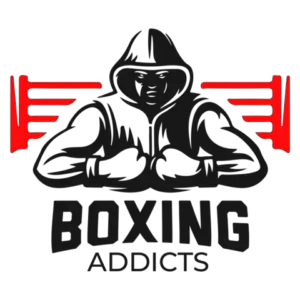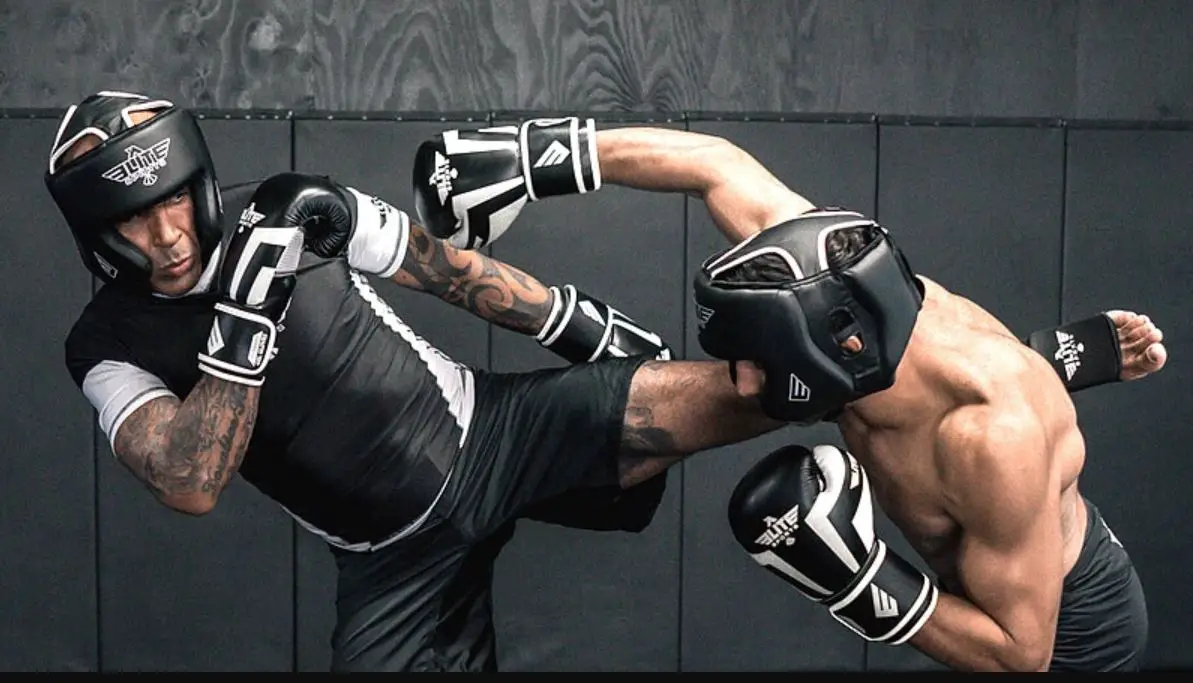You’ve done it, you made the decision; you want to be like those crazy cage fighters on TV. Or at least do training like them.
There will be a lot to learn and lots and lots of questions. Perhaps one of the first questions you will have is;
“What type of equipment do I need?”
And that my friend, is one of the most important questions.
Read this article to help you choose the proper equipment the first time so you can stay safe while training and own quality equipment that will last for years.
We will cover the basic equipment needed to start MMA, the stuff you may need down the road and the reason each piece of equipment is important.
Because I don’t know you and your goals with training, I will do my best to point out equipment that may be needed for those who are more serious and where the casual trainee can skimp and save a few bucks.
But why take my advice? Well, for starters, I’m a doctor….seriously….But more importantly for this article; I am a former pro MMA fighter.
Let’s dig into this guide and get you in the cage!
Mouth Guard:
A mouth guard is arguably the most important piece of equipment you will own. Personally, I don’t even step onto the mat to start my warm-ups without my mouthguard in. A mouthguard will assure you keep your sparkling teeth looking good.
There are many benefits to wearing a mouthguard beyond just the looks though.
A mouthguard will actually help you perform better. That’s right, wearing a mouthguard has been shown to increase strength and power (1).
Functionally, for MMA/BJJ, if you’re getting chocked or cross faced and you have a mouthguard in, it’s much easier to hang out while your face is getting smashed if your teeth are grinding into rubber rather than each other or your cheeks and lips.
Things to think about when picking out a mouthguard:
Take a breath; can you breathe with it in?
A mouthguard should allow you to breathe comfortably while it’s in. It should form to your mouth and seal your top teeth so perfectly that you can talk relatively normal with it in. Now go for a run or do a workout. Still able to breath just fine? If the mouthguard fits properly breathing should not be an issue.
Does it work?
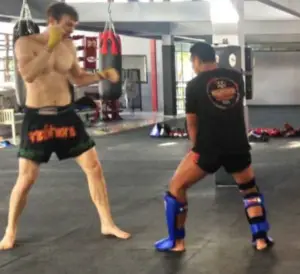
Now a days most mouth guards will be of good quality. The low cost boil and bites will run you about $12 and save you a ton in dental bills. If you want to get crazy, you can have a dentist specially mold one for you and it will run about $250-500.
Will it stay in?
If your mouthguard fits well enough for breathing & talking, it should have no issue staying in your mouth during any training. The fit should be so snug that it almost has a suction feel as it comes out of your mouth after training.
Does it look cool?
Well, I don’t care about this, but some do. Mouthguards come in an array of colors and designs. You can get words put on the front of them or vampire teeth, or whatever. Have a blast picking it out, just make sure it’s in your mouth.
Cup
Arguably the most important piece of equipment you will own….yea, cup and mouth guard are a tie in my opinion.
For dudes, our family jewels are quite precious, and it hurts when they get hit.
A good cup will not only give you protection, it will also help you win a match!
Let me explain;
You have an opponent’s back and they’re belly down on the mat, grapevine his/her legs and drive your cup into their spine. Guaranteed, they’ll give up whatever you want.
Another great time to use that cup to your advantage is when you’re pulling an armbar, the cup gives you a bit more leverage, adds discomfort for them and ensures comfort for you.
These two things may also be a couple reasons why cups aren’t allowed in most Jiu Jitsu tournaments?? See rule 8.3.7 in the IBJJF rule book (2).
What to look for in a cup:
Personally, I like the steel Muay Thai cups. I know I am well protected, it fits great and moves with me.
Some people feel the steel cups are too ridged. A lighter, plastic cup that is a bit more flexible may be more to their liking.
Other important things;
Can the cup come out of the jock to wash it? If not, assure you have a cleaning method for it.
How does the jock fit? Assure the straps (or ties in some cases) are comfortable during all movements and they don’t allow for anything to pop out of place….OUCH!
Hand Wraps:
Wraps are a very important piece of equipment for anyone doing any striking work, even if it’s just on the bag.
First and foremost; any of the wrap variations that are designed to make wrapping your hands easier are a waste of money if you are at all training seriously. Just get real wraps, watch a Youtube video or two on how to wrap your hands and do it.
Another note on hand wraps. There are two sizes; 108 inches and 180 inches. Get the longer ones if you’re over 12 years old.
Finally, get the hand wraps that have elastic sewn into them, sometimes referred to as Mexican style wraps. These will be much more comfortable, last longer and make you smile.
And cleanliness. Wash your hand wraps regularly.
Pro tip: Put your wraps in a laundry bag of some sort, like a bra bag. If you don’t, they will tie knots around all the other clothes and knot themselves up. Knot fun to undo….Get it…Knot…I’m punny.
Here is a great video from Youtube on one way to wrap your hands. The guy in this video does a great job of step by step explaining how to wrap your hands properly.
MMA gloves:
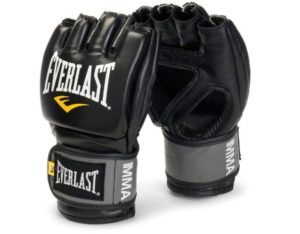
Owning MMA gloves will be very important if you want to work all aspects of the game and especially important for training if you have hopes of someday getting in the octagon.
However, if you just want to train casually and getting punched with near bare knuckles isn’t your thing, then you can pass on the MMA gloves.
In training MMA gloves would be used for sparring to get the actual feel of throwing and blocking punches with the smaller gloves.
Doing Jiu Jitsu with MMA gloves on will also be very important if your planning to fight. Just wearing the gloves changes a lot of the Jiu Jitsu game.
And finally, MMA gloves will be used for ground and pound work. That is Jiu Jitsu with strikes. As would be the case if actually fighting.
Check Out Our Best MMA Gloves For Beginners Here:
What to look for in an MMA glove:
Fit:
MMA gloves should be able to fit a set of wraps under them. It should be snug getting the gloves over the wraps and the wrist wrap of the glove should close snuggly around your wrist.
Style:
There are several different styles to MMA gloves from the weight to the way they wrap your hand and wrist and of course colors and materials. The most important of these factors in material. Always spring for the real leather. It will last longer, stay cleaner and look better. The other factors are mostly personal preference.
Training vs fighting:
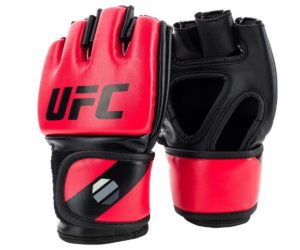
At my home gym, we always had two sets of MMA gloves. One set of highly padded 8oz MMA gloves for sparring training and then the actual 4-6oz MMA gloves for Jiu Jitsu and ground and pound work.
Again, if you’re not super serious, you definitely don’t need two pairs of MMA gloves, and possibly you don’t need any.
Boxing Gloves:
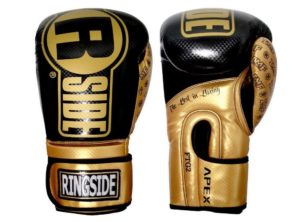
Boxing gloves will be an absolute necessary item for training. And just like any other piece of equipment, spend the money here for quality and they’ll last you many years.
I love my boxing gloves (16 oz Twins Special) and they lasted my entire pro career and I still have them to this day.
You will use your boxing gloves for sparring, bag work and some ground and pound drills (depending on where and how you train alternating with your MMA gloves).
What is the correct size to pick?
Generally, I tell everyone to just go with the 16oz gloves. 14 or 12 oz gloves increase the risk of someone getting injured in training. Plus, the 16oz gloves are more difficult to hold up for the entire round, so you get additional training there too.
What about “bag gloves”?
Bag gloves are just fine to have and use if you want to purchase a pair. I personally, use my 16oz gloves on the bag. I find they protect my hands better and as I said above, they’re extra work to hold up.
What is the best brand?
There is no paid endorsements here. Ask anyone in the boxing world and they will likely tell you to get Twins Special or Fairtex. Although other brands like Everlast and Hyabusa also have a good product, especially if you look at their higher end gloves.
Alex Trujillo told me he recommends Twins Special Gloves and Shin Guards, he is the head coach at Midwest Training Center (MTC); former home to Clay Guida, Jason Guida, Chase Bebe, Brian Gassaway and many other top level fighters.
I can second that having bought two pairs of Twins in Thailand in 2012. 10 oz and 16 oz. They lasted 7 years of heavy use and can still be used to this day. The 10oz are perfect for pads and bags while the second oz have great padding for sparring. This is great unless you get a sparring partner who likes to wear hard gloves and you want to hit back a bit harder.
Headgear:
Headgear is a very important piece of equipment. Some gyms are really “cool” and don’t use headgear. If that’s your gym, find a new one or you might not remember much down the road.
Brain injuries are real and you want to take every possible step in avoiding them.
Here’s a fun fact, in this 2019 study it showed the heavier of a fighter you are, the greater your chances of getting knocked out and thus brain injury (3). So, especially important for the big guys to wear the headgear.
When looking into headgear there are several factors and styles to consider:
Chin cup or no?
All variations of headgear will have a chin strap of some sort to help keep the headgear in place while you bob & weave. Some styles will also have a padded chin cup. Personally, I was a fan of the padded chin cup. It made me feel more secure in my headgear.
Cheek protection or no?
You will notice that some headgear styles will include padded cheek protection. If you have this and the padded chin cup you are very well protected!
Material: Headgear should be leather or vinyl, something that will let sweat and blood wash off easily. Materials that absorb sweat like cotton mixes are a bad idea for any pad as they are very difficult to clean.
Fit of headgear: Headgear should fit very snug. It definitively should not move separate from your head and face. However, the headgear shouldn’t be so tight that it gives you a headache and feels like your heads in a vise.
Shin Pads:
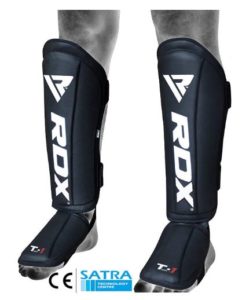
If you are training any style of stand-up fighting that involves kicking, ie; Muay Thai, kickboxing, etc. you will require a good set of shin guards. However, for MMA, there are specific shin guards that can be used for stand up fighting and will stay on well during the transitions to the ground and even during ground fighting.
In my opinion, you may want both if you are serious about moving forward.
The more tradition styles of shin pads are much larger and thicker. If you’re newer to the sport or just want quality protection, you may want to go this route. Until your shins are well conditioned, it hurts to check (block) a kick. And even after your “used to it”, it still hurts in a long training camp.
The MMA style shin pads are great because they fit more like a sleeve around your lower leg and will stay on your shin and in the proper spot. This is great after a ground battle where you regain standing; with this style pad, you’re ready to go. The traditional style pads almost always require some adjustments after a stand up. This convenience of course, comes at a price. That being less padding and bruised up shins.
I like using both styles. The traditional during the weekly stand up training and the MMA style for the “live go’s” on Saturdays.
Check Out Our Best Shin Pads For MMA here:
MMA shorts:
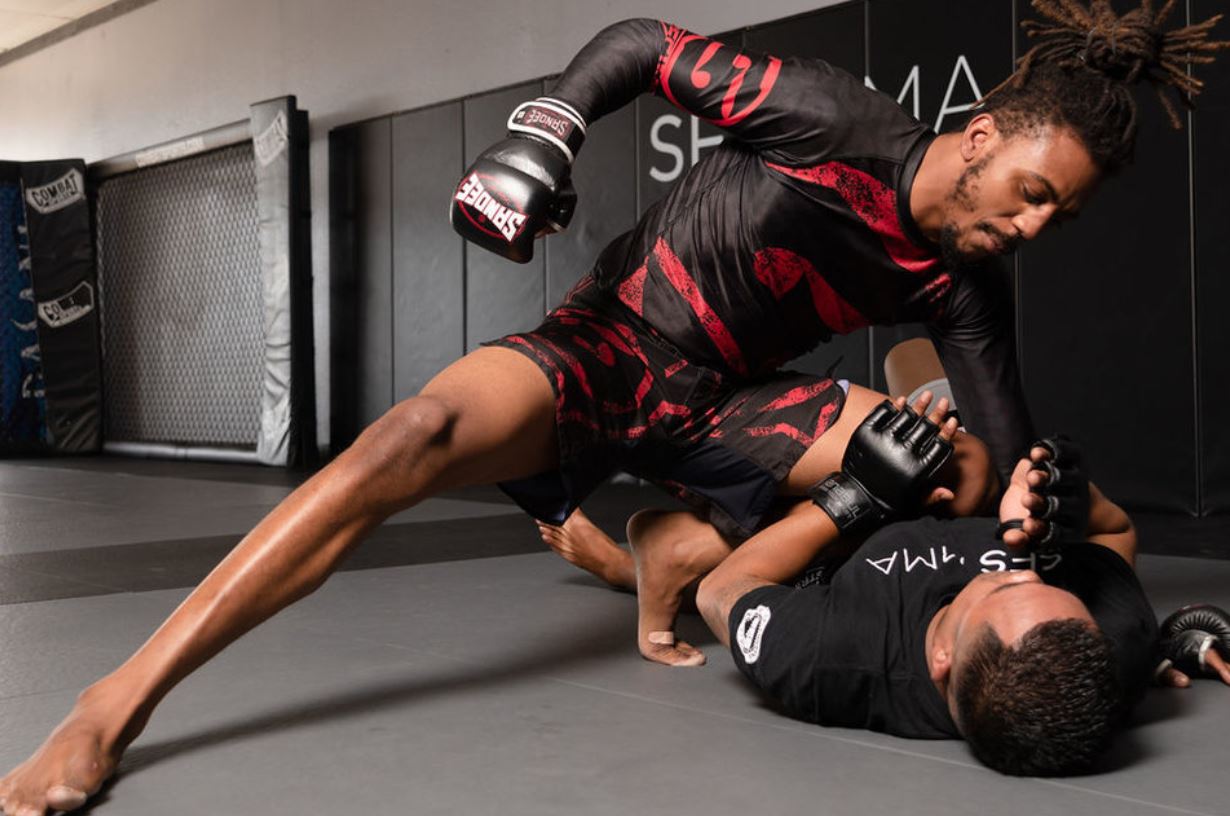
Don’t be the guy training at the gym with basketball shorts on. Mesh shorts present a danger to your training partners fingers. If they get stuck in a pocket, they may get broken.
Get a good pair (or several pairs) of MMA shorts. These shorts are designed to move with your body in all sorts of awkward positions and depending on the brand, they may even have cool features, like a grip strip on the inner thighs to help you grab onto opponents with your legs.
When you decide on a pair you like, do a few deep air squats, some side to side stretching and bending and make sure they feel good.
These are on the lower end of the priority list for starting up MMA, but you will need either these or compression tights (I Know, I don’t like calling them that either) to get on the mat.
Rash Guard & Compression Tights:
To go with the soap and showering section below….the less skin exposure you have, the less likely you are to contract a skin disease.
Wearing a rash guard will also help prevent mat burn when rolling no gi, and it will prevent gi burn when you have your gi on.
A common question is: Is there a difference between a rash guard and a compression shirt? To my knowledge. No. Aside from the cool designs offered for the BJJ and MMA specific ones.
One last thing. For the sake of you and everyone at your gym. Wash your rash guard after every training session. And that goes for all other clothing and equipment too. If you can toss it in the laundry, do it. As for the pads, wipe them down with Lysol or something similar after every session.
Soap & showering, hygiene:
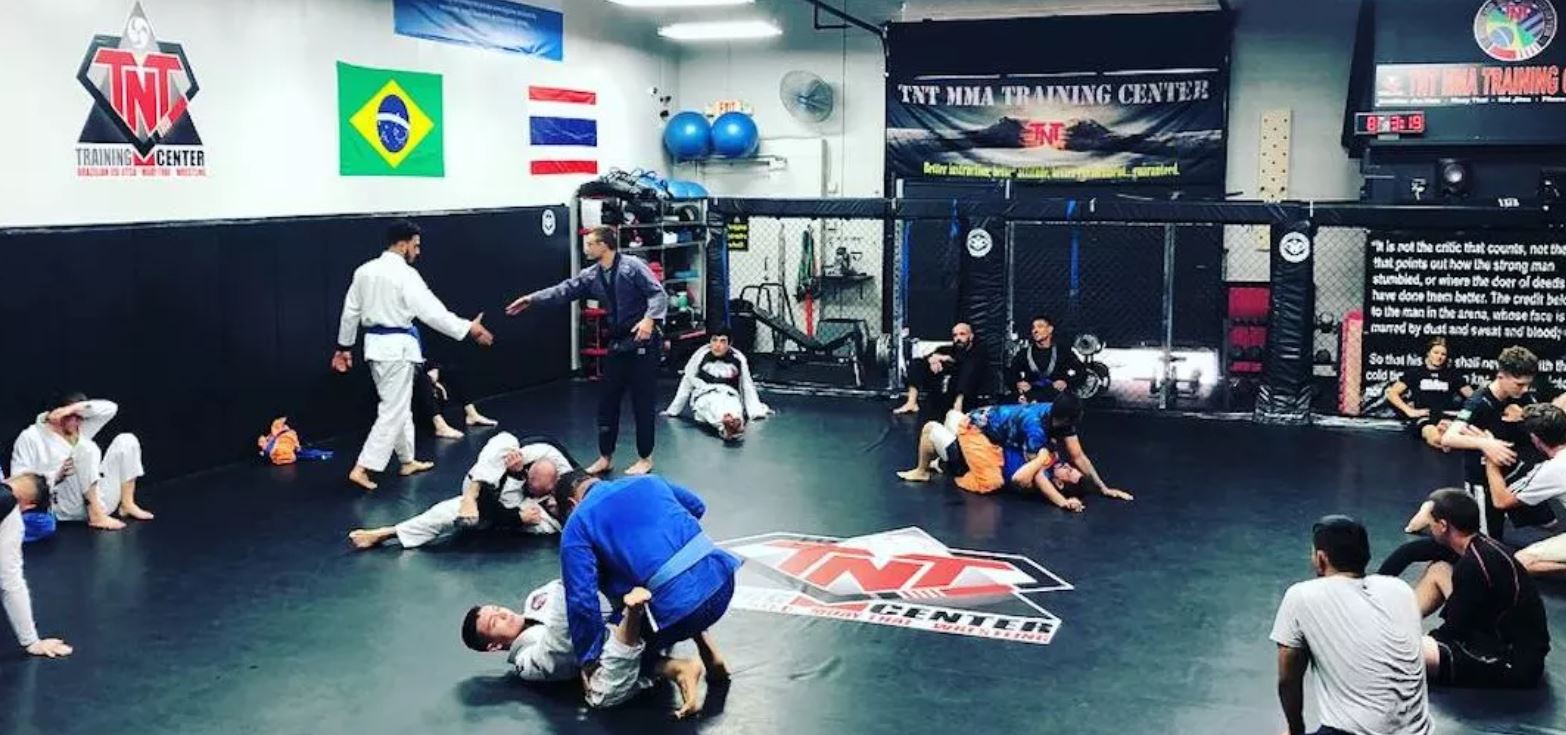
Unfortunately in MMA, BJJ, wrestling and other martial arts skin diseases are very common. Things like ringworm, impetigo and even MRSA are crawling all over.
Fortunately, these things are very easy to avoid when you take the proper precautions.
- Go to a gym that washes their floor and wall mats multiple times daily. Minimally the mats should be washed with a disinfectant soap after every session. Good gyms will also wash before sessions too.
- Shower ASAP after training. All of these nasty skin diseases need to work their way into your skin. The sooner you wash, the less likely you are to get infected. Use a good soap like Defense soap made specifically for sweaty mat sports. And wash thoroughly.
- If you get something, get to a doctor ASAP, STOP TRAINING and tell the owner of the gym. The sooner you start treatment the better. And if you go back to the gym while it’s still contagious….well….you’re a jerk.
- One final note for newcomers; clip your finger and toe nails before every training session. Nothing is worse than getting clawed by someone. Not only does it hurt, but it is a great way to spread disease.
In a recent study it was no surprise to find that amongst sports, wrestling (and can be assumed all combat mat sports) had by far the highest rate of infectious skin diseases (3).
All in all, this list should get you on the road to a complete gym bag of MMA gear. I am sure you will have many more questions about this stuff, feel free to comment on this article and I will do my best to answer quickly.
A few tips to remember:
- Spend the extra money for better quality equipment
- Always try it on and move around before you take the tag off, assure it’s a good fit for you.
- CLEAN! Clean yourself, your equipment and your gym after every training session. This is simply mutual respect for the health of you and your training partners.
Until next time,
Dr. Dave
References:
Buscà B, Moreno-Doutres D, Peña J, Morales J, Solana-Tramunt M, Aguilera-Castells J.
J Exerc Sci Fit. 2018 Apr;16(1):5-11. doi: 10.1016/j.jesf.2017.11.001. Epub 2017 Dec 1.
- International Brazilian Jiu-Jitsu Federation Rule Book. Version 4.0, 2015.
Ashack KA, Burton KA, Johnson TR, Currie DW, Comstock RD, Dellavalle RP.
J Am Acad Dermatol. 2016 Apr;74(4):679-84.e1. doi: 10.1016/j.jaad.2015.10.042. Epub 2016 Feb 2.
